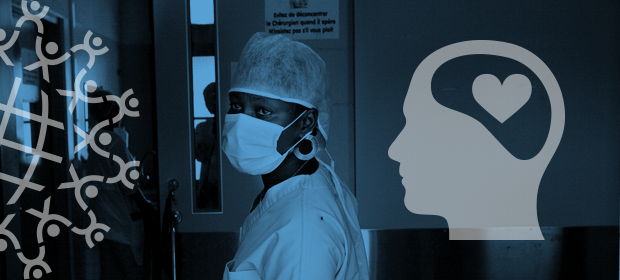Where We Work
See our interactive map


Some research shows it decreases burnout and self-reported distress among nurses. Could it do more?
Just outside Windhoek, Namibia, I stood in the maternity ward of Windhoek Central Hospital. Filling the lime green halls were students, nurses, midwives, doctors, clients in motion, and the groans of a mother in labor.
I was there as part of my UNC-IntraHealth summer fellowship to support the Nursing Now Namibia Campaign, building a tool to help identify gaps in compliance to hospital standards on the maternity floor and provide recommendations for areas of improvement. I had the opportunity to visit three hospitals and interview nine nurses.
It is very traumatizing. Very stressful and tiring.
Here’s some of what I asked them:
What are your goals and dreams?
“I want to be a teacher,” one responded. “I want to focus on trying to manage the ward, improve things. I want proper nursing. I see myself going far.”
How does working as a nurse in the maternity ward affect you?
“It is a high-risk unit,” one nurse told me. “It is very traumatizing. Very stressful and tiring.”
“Working in maternity, you find that the ward is full from here to here,” another said. “I was standing for so long that I developed deep vein thrombosis—my foot was so painful, but luckily nothing more developed.”
A theme arose: regardless of the hospital they worked in, it quickly became apparent that although the nurses had immense passion for their jobs, they were stressed, burned out and facing challenges caused by the nursing shortage.
Nursing shortage. This has been a problem since at least the 1930s, when reports of shortages began emerging in the US. Unfortunately, it’s still a problem today around the world. The reasons, however, are different from country to country.
In low- and middle-income countries, the problem often isn’t a lack of nursing recruits but of resources to train and hire new nurses and to pay incentives for current nurses. Often these challenges are compounded by working conditions, lack of equipment and resources, difficult/extreme cases in patients, and lack of support from management. The stress often leads to burnout and negative health effects.
As a nurse, I know the struggles and the stress of the job.
“Substantial evidence from studies in the USA, Europe, and other countries relates lower nurse staffing and higher nurse workloads to adverse patient outcomes such as mortality, infections, falls and longer lengths of stay,” wrote Jack Needleman in his BMJ editorial.
As a nurse, I know the struggles and the stress of the job. In Namibia, I began to see how grave the global ramifications of the shortage are.
Many of the nurses I spoke with deal with their stress by going to church, spending time with family, and cherishing the appreciation of their patients when times get difficult. Many of them have goals and dreams of becoming clinical instructors, specializing in maternity and beyond. But sometimes, one told me, they just have to leave their work troubles at the hospital, “go home and come back the next day to care for their patient.”
Given all this, how do we make it easier for nurses to provide the best care possible, even in the midst of the shortage?
One way could be through mindfulness. In the global health field, we don’t often talk about mindfulness as a possible intervention. But according to the American Journal of Critical Care, mindfulness-based stress reduction (MBSR) has been found to increase self-compassion and serenity among nurses and decrease burnout and self-reported distress. The same study also found that those changes were maintained at a three-month follow-up.
In another study, Margo Halm analyzed the impact of mindfulness programs on whole-person (biopsychosocial) outcomes of nurses. The results showed an overall improvement in the nurses’ physiological and psychological well-being. Not only were their salivary amylase (an enzyme that’s a biological marker of stress) levels lower at 8 weeks in one of two studies that measured it, but nurses’ self-reports of negative emotional reactivity to stress, anxiety, depression, or interference with social functioning were also lower at 4 and 8 weeks.
These programs could help equip nurses with new coping mechanisms in the midst of a global shortage.
These effects led to less-frequent reports of secondary trauma, emotional exhaustion, depersonalization, low personal accomplishment, and other components of burnout.
Obviously, these studies were conducted in environments that are very different from a Namibian hospital. And interventions like these won’t erase the critical need for staffing and other resources that are necessary to carry out optimum care. But research that considers the unique settings, regions, and cultures of low- and middle-income countries could lead to tailored mindfulness intervention programs. And combined with including more nurses in all levels of management, leadership, and policy creation, they could help equip nurses with new coping mechanisms in the midst of a global shortage.
Nurses in low- and middle-income countries cannot continue to push the profession forward if they are burnt out. For nurses to continue to work in stressful settings, we must begin to think about their holistic health and how it affects their ability to carry out care.
Get the latest updates from the blog and eNews




